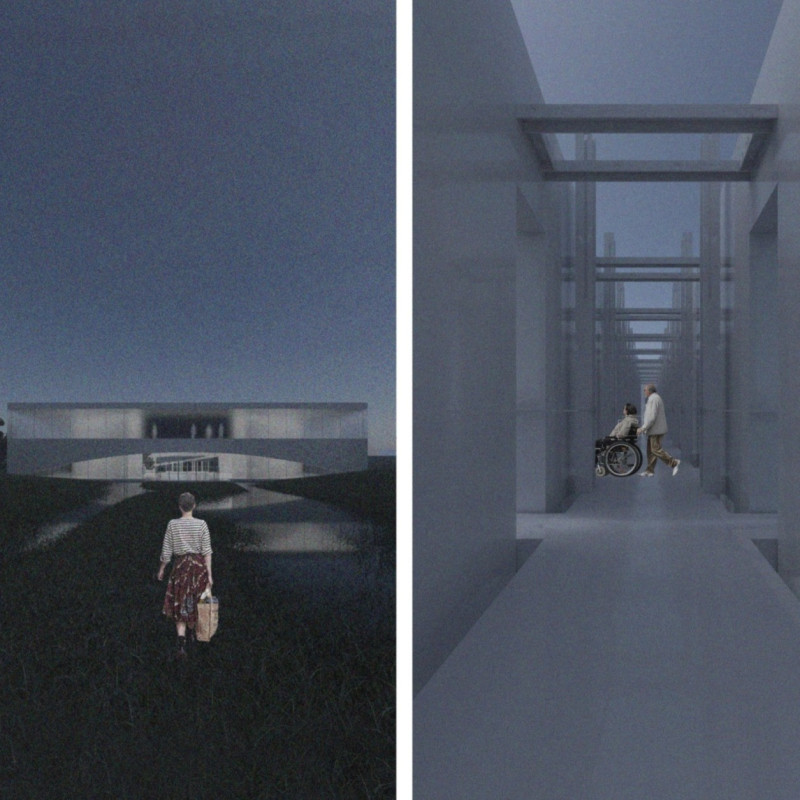5 key facts about this project
The Pause is located in Qing Quen Shan, an area that has seen a big drop in its population over the years. It is designed as a community center, aiming to help residents reconnect with their coastal surroundings while also revitalizing their cultural customs. The design focuses on separating spaces for rituals from those for daily activities, reflecting the habits and beliefs of people who have historically relied on the ocean for their livelihood.
Community Spaces
- The common areas are placed close to the landside and feature simple geometric shapes. This design enhances usability and creates a welcoming environment for community members. The geometric forms not only improve accessibility but also encourage interaction among users, making it easier for people to come together in the space.
Temple Integration
- The temple is thoughtfully situated further inland, within a layout that resembles a fan shape made by salt farms. Its location is important; it is only reachable during low tide. When the tide rises, the temple appears isolated on the ocean side, giving it a prominent presence. This arrangement highlights its spiritual role, inviting visitors to reflect as they engage with the natural surroundings.
Sustainability and Context
- Although the materials used are not specifically mentioned in the presentation, it is likely that sustainable options are chosen to fit the coastal environment. The design aims to blend with the landscape, drawing on local building traditions while ensuring durability against harsh weather. Thoughtful choices in materials would allow the community center to support its surroundings rather than disrupt them.
Cultural Resonance
- The Pause acts as a key space for revitalizing community ties, emphasizing local traditions and strengthening connections with the sea. The architecture clearly reflects cultural identity and environmental awareness. A notable design detail is how the temple stands alone during high tide, presenting a moment for contemplation against the backdrop of the ocean. This striking view fosters a sense of peace and connection to the water, reinforcing the project's objectives.



















































